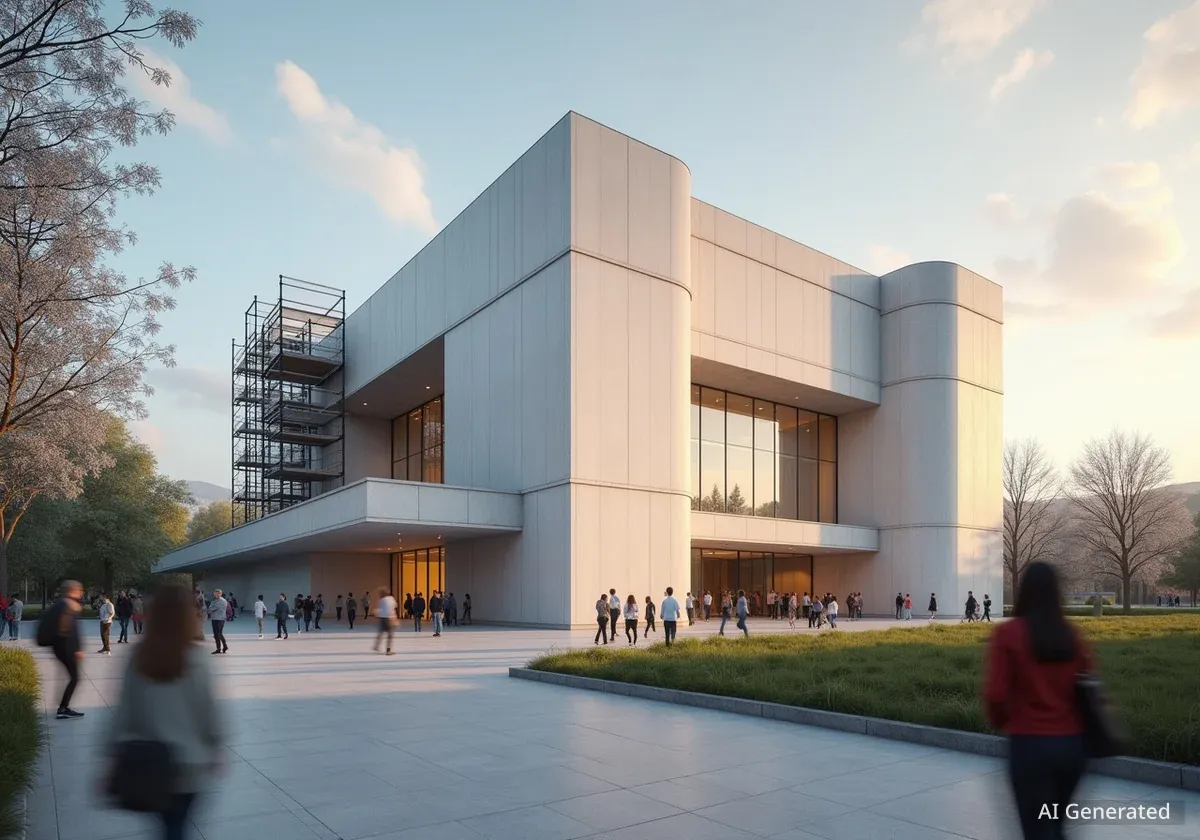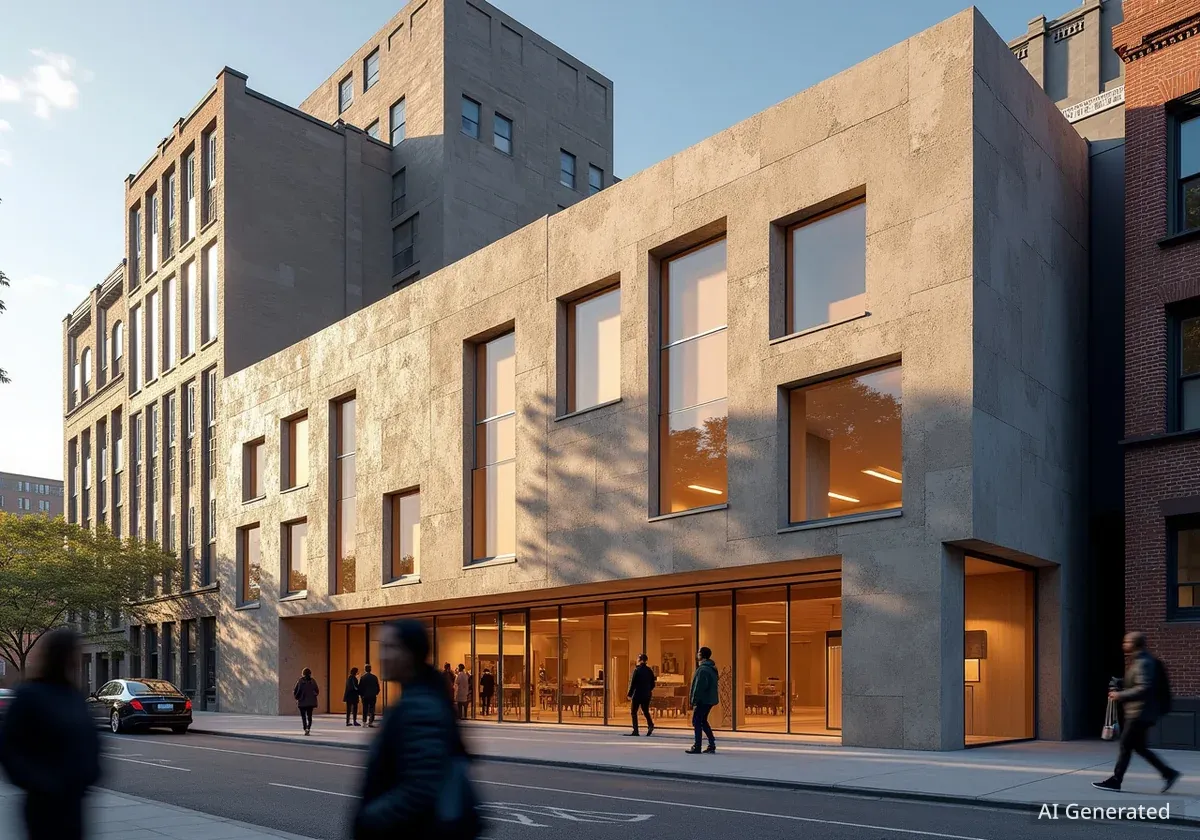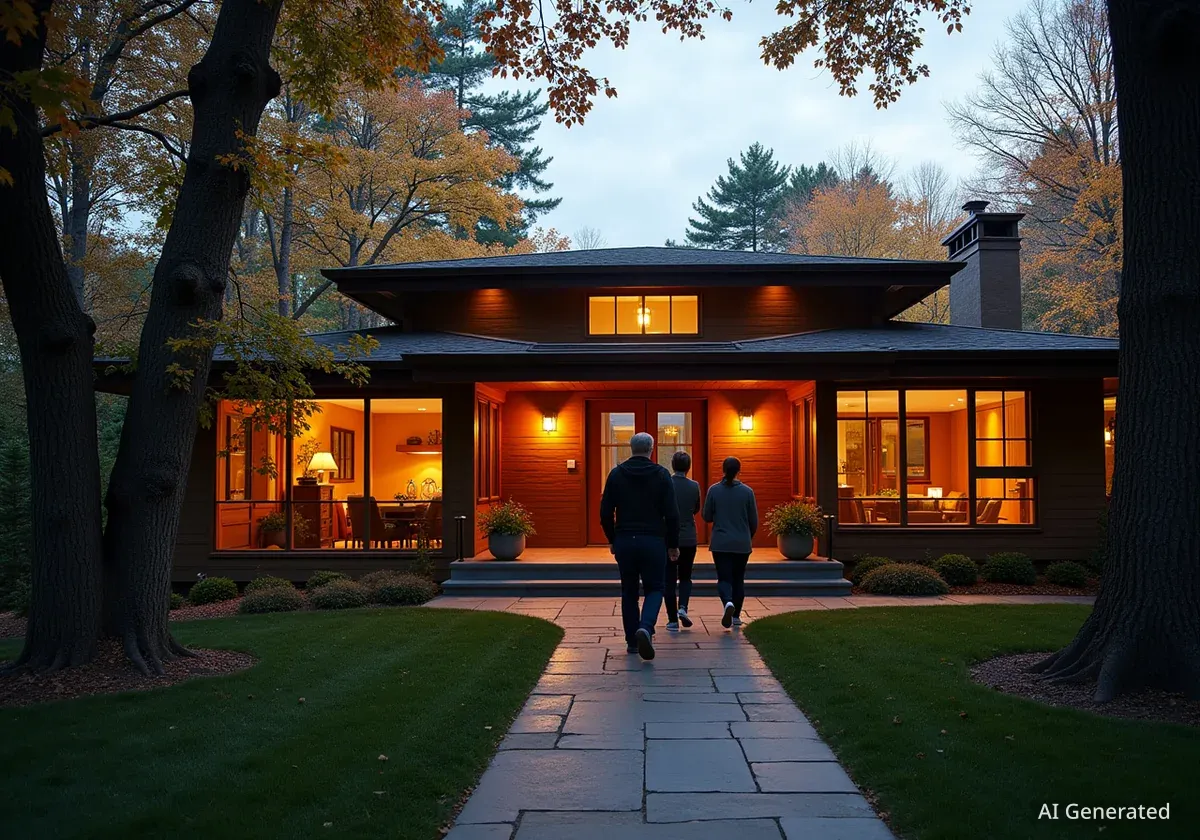The Pompidou Centre in Paris is scheduled to close its doors on September 22, 2025. This closure marks the beginning of a five-year renovation project. The extensive work aims to modernize the landmark building and address structural issues, including asbestos removal and improved insulation. While the main building will be inaccessible, its vast collection of modern art will remain available to the public through various partnerships and new exhibition spaces across France.
Key Takeaways
- Pompidou Centre closes September 22, 2025, for five years.
- Renovations include asbestos removal and insulation.
- Art collection remains accessible through 'Constellations' program.
- Grand Palais will host temporary exhibitions until 2030.
- A new branch in Massy opens in late 2026.
Paris Landmark Undergoes Major Overhaul
The Pompidou Centre, a prominent cultural institution in the heart of Paris, will undergo a significant transformation. The building, known for its distinctive exterior architecture with exposed pipes and structural elements, has been a cultural hub since its inauguration on January 31, 1977. Designed by architects Renzo Piano and Richard Rogers, the centre aimed to democratize culture and make art accessible to a wider audience. Nearly five decades later, the need for renovation has become critical.
The decision to close the centre for such an extended period highlights the scope of the work required. The primary goals of the renovation are to update the building's infrastructure, enhance its energy efficiency, and ensure the safety of visitors and staff. This includes the crucial task of removing asbestos, a material commonly used in construction during the period the centre was built.
Fast Fact
The Pompidou Centre holds the largest collection of modern art in Europe and the second largest globally, surpassed only by the Museum of Modern Art (MoMA) in New York.
Ensuring Art Accessibility: The 'Constellations' Program
Despite the closure of its main building, the Pompidou Centre has developed a comprehensive strategy to keep its extensive art collection visible. This initiative, called the 'Constellations' program, involves strategic partnerships and the establishment of new exhibition venues. The goal is to maintain public engagement with modern art during the five-year renovation period.
One key partner in this effort is the Grand Palais in Paris. This historic exhibition hall will serve as the primary venue for all temporary exhibitions from the Pompidou Centre until 2030. This collaboration ensures that the Parisian art scene continues to thrive, even with the temporary absence of a major institution.
"Our aim is to ensure that modern art lovers have plenty of opportunities to contemplate these world-class collections while the iconic 'Beaubourg' building undergoes a facelift," stated a representative of the Pompidou Centre.
Artworks Travel Beyond Paris
The 'Constellations' program also extends beyond the capital. Several masterpieces, some of which had never been exhibited outside Paris before, have been loaned to the Pompidou Centre's branch in Metz, located in eastern France. This allows regional audiences to experience significant works from the national collection.
- Sculptures by Henry Moore have been transported to Metz.
- Works by Henri Laurens are also on display.
- Sonia Delaunay's notable painting, "Le Bal Bullier," is now in Metz.
- The wall from André Malraux's studio has also been moved for exhibition.
These loans underscore the centre's commitment to broad cultural dissemination during its renovation phase. It represents a unique opportunity for art enthusiasts outside Paris to engage with these important pieces.
Historical Context
The Pompidou Centre was conceived in the aftermath of the May 1968 social unrest in France. Its design, considered revolutionary at the time, aimed to break down traditional barriers between art and the public, embodying a spirit of openness and accessibility in cultural institutions.
New Branch Opening in Massy
As one door closes in central Paris, another is set to open in the greater Paris region. A new branch of the Pompidou Centre is scheduled to welcome visitors in Massy by the end of 2026. This new facility aims to attract a diverse audience to a site located approximately 30 minutes from central Paris. The Massy location offers ample space for various functions, including the restoration of artworks and the staging of new exhibitions and cultural events.
The establishment of the Massy branch demonstrates a forward-thinking approach to cultural outreach. It provides a permanent new space for the centre's activities, expanding its geographical footprint and making its collections accessible to a new demographic. This strategic expansion is crucial for maintaining the institution's relevance and reach during and after the main building's renovation.
The Massy site will also play a vital role in the preservation and maintenance of the collection. With dedicated areas for art restoration, it ensures the longevity and integrity of these valuable works. The new branch is expected to become a significant cultural destination in its own right, complementing the renovated central Paris location upon its reopening.
Impact on the Beaubourg Neighborhood
The temporary closure of the Pompidou Centre will undoubtedly create a noticeable change in the Beaubourg neighborhood. The centre has been a major draw for tourists and locals alike, contributing significantly to the area's vibrancy and economy. Local businesses, including cafes, restaurants, and souvenir shops, may experience a temporary downturn in foot traffic.
However, the long-term benefits of the renovation are expected to outweigh the short-term disruptions. A fully modernized and energy-efficient building will enhance the visitor experience and secure the centre's future as a leading cultural institution. The city of Paris and the Pompidou Centre management are working to mitigate the impact on the local community, emphasizing the continued availability of the art collection through alternative venues.
The renovation project represents a substantial investment in Paris's cultural infrastructure. It reflects a commitment to preserving and enhancing one of the city's most iconic landmarks for future generations. The reopening in 2030 is highly anticipated, promising a revitalized centre ready to continue its mission of cultural enlightenment.




